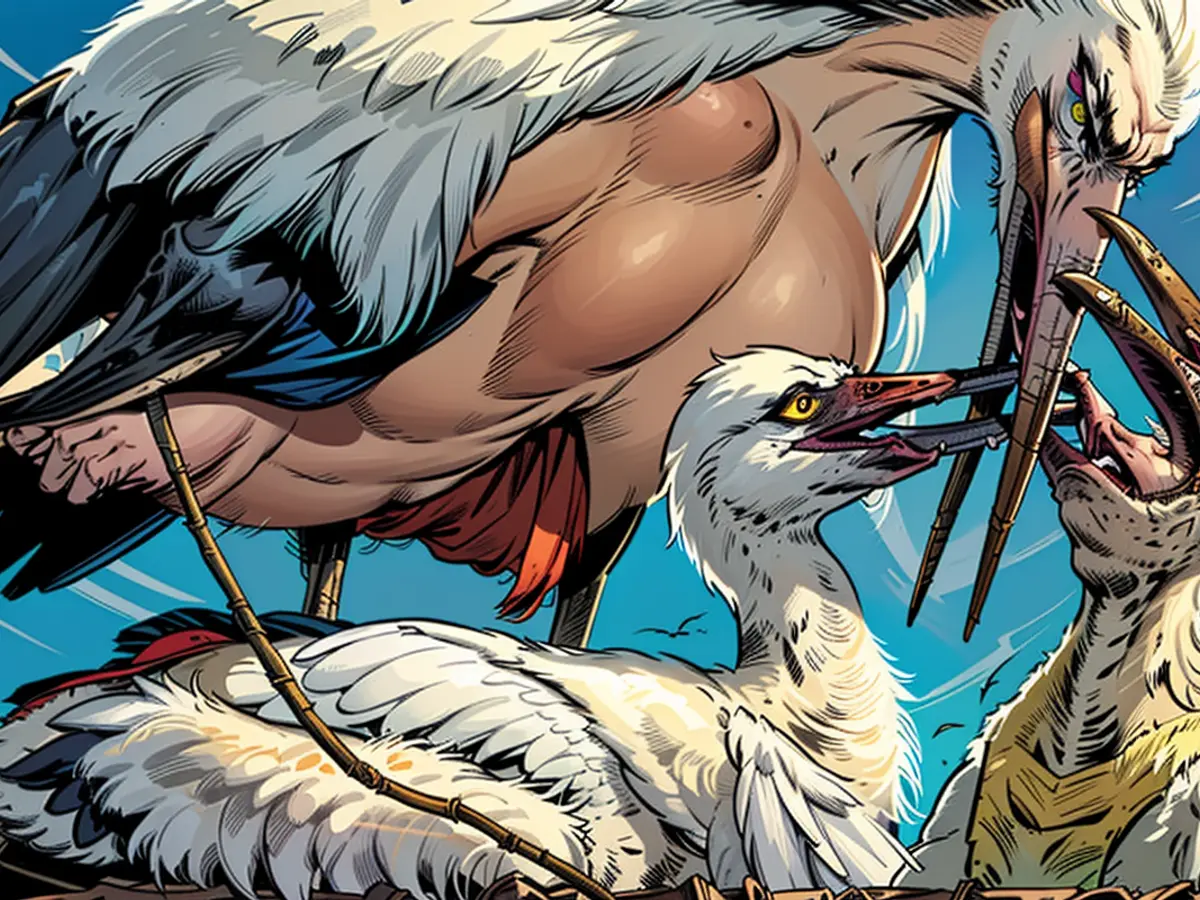Nature conservation - Rings for young storks: aerial work platforms up to the nests
The young White Storks are already rather large, but they still live with their parents in the nests. It's a good time to ring them now, so they can be identified later, no matter where they may land. "We ring about 250 young storks per season in Amt Neuhaus and in the old Ludwigslust district," reported the volunteer bird protector Helmut Eggers on Thursday, who for years has been ringing the young storks with employees of the company Wemag Netz.
The company provides a work platform to reach the nests at heights of eight to eleven meters. "As a company, we are responsible for ensuring that the birds do not injure themselves on our facilities and do not interfere with the power supply," said Wemag bird protection officer Jan Koppelmann during the ringing action near Zarrentin am Schaalsee.
According to the Nature Protection Station NABU, the young storks remain completely still during ringing, they lie down almost as if they were dead. This behavior, known as tonic immobility, is a protective mechanism to avoid being recognized as prey by predators. This makes the work of the ringers much easier.
Wemag supports bird protection, according to its own statements, for many years. The money does not only flow into nesting platforms and the mounting of nesting boxes, but also into bird protection hoods, which are attached to masts with upward-pointing insulators.
Press release
The young storks will likely continue to reside in their new home, which is situated in Mecklenburg-Western Pomerania, after they've been ringed. The process of ringing these young White Storks in Zarrentin helps with nature conservation efforts, as it allows for their identification even if they migrate to different areas. Additionally, Wemag, a company based in this region, plays a crucial role in bird protection, providing resources such as work platforms and bird protection hoods to ensure animal safety and encourage the growth of animal populations.








